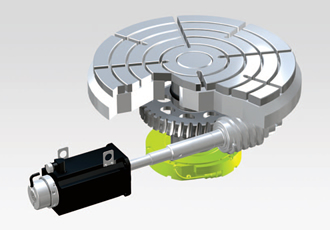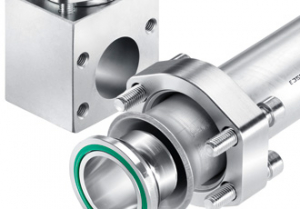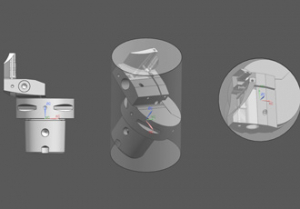5-axis machining centres should be fitted with linear encoders

Compared with rotary encoders, linear encoders provide more accurate feedback of actual cutter position to the control of a machine tool. Uneven distribution of heat in ballscrews caused by friction leads to inaccuracy when using the ballscrew pitch to translate revolutions of a rotary encoder into linear distance travelled. Errors from drive deformation and backlash are also present. A glass linear scale fixed to a slideway is immune to these errors, as the scanner sees only the absolute position of the axis.
Encoder manufacturer, HEIDENHAIN, which also makes CNC systems for programming and controlling machine tools, asserts that 5-axis machining centres should be fitted with closed-loop linear encoders rather than semi-closed-loop rotary encoders. Failure to do so on what are relatively expensive machines results in unacceptable loss of accuracy and repeatability.
The company comes to this conclusion for two main reasons, both of which exacerbate the ballscrew heating problem. First, in all 5-axis machines and particularly those of B-axis design, the distances the linear axes must travel to achieve optimal cutter orientation at a given location on a workpiece surface are greater than the equivalent travels on 3-axis machines to reach the same tool centre point. Longer travels lead to higher ballscrew temperature.
Secondly - and this applies to all machine tools - axis speeds have doubled in the last five years due to better tooling, improved drives and demand for higher feed rates to raise productivity. Preloading of the ballscrews to reduce axial clearance between shaft and ball nut has to be maintained to preserve stiffness and accuracy, so significantly greater heat is generated by the faster rotational speeds.
Internal cooling of ballscrews can mitigate temperature rise and variation, but does not eliminate it; and a hollow cross section introduces mechanical weakness. Moreover, such cooling systems can be power hungry. Software compensation in control systems does not help much either, as it is aimed mainly at allowing for deformation of the machine tool structure, rather than addressing axis drift. In short, there is no substitute for the inherent accuracy of positional feedback provided by closed-loop arrangements.
HEIDENHAIN has developed the argument further to promote absolute feedback in the two rotary axes of a 5-axis machining centre using angle encoders. Semi-closed-loop rotary encoders are not able to compensate for errors in a drive that occur due to a combination of thermal growth, eccentricity of the gears, radial run-out of the shaft and elastic deformation of gear teeth and bearings. In contrast, angle encoders with closed-loop feedback are not affected by such unknown quantities.
All of these points and more are presented in a HEIDENHAIN white paper entitled “Influence of Position Measurement on Accuracy in 5-Axis Machining”,
Downloads
Similar articles
More from HEIDENHAIN (GB) Ltd
- Manual 2D inspection becomes faster and more accurate 8th August 2018
- Heidenhain controls allow access to order processing data 12th February 2018
- New touch screen controls on show at MACH 2018 8th February 2018
- Industry 4.0 compatibility of controls at Southern Manufacturing 13th November 2017



ed.jpg)








Write a comment
No comments